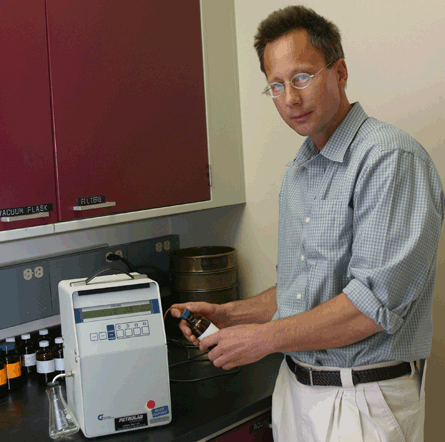As senior researcher at the Energy & Environmental Research Center of the University of North Dakota, Ted Aulich is on the frontlines in the search for alternatives to Avgas and petroleum
What drew you towards chemistry and fuel research?
Growing up, I had an uncle who seemed to have a really interesting life, and he was a chemist, so I figured chemistry might not be a bad way to make a living. I was fortunate to be given an opportunity to get into fuel chemistry and fuels development in the late 1980s, and it's been interesting working in the intersection of science, economics and politics.
How do you know you're making a valuable contribution?
I will feel like we're making progress when something we've developed gets pulled into the marketplace and is demonstrated to be commercially viable.
 |
|---|
Why are standards so strict for aircraft fuels?
Materials compatibility is probably the single biggest issue if you're trying to develop an alternative fuel for aviation. You could have a long-term issue with an ingredient in your fuel and what it comes in contact with.
With a car, it's not a big issue if your engine stops. When you're flying, it is. Certain metals - cadmium, for instance - can mess up aircraft turbines. If you were starting with a vegetable oil from a plant that takes up cadmium, and the cadmium ends up in your fuel, you could have a problem.
Are there feasible replacements for Avgas?
We developed a fuel that comprises a significant amount of ethanol, somewhere between 87% and 93% ethanol, and there are some petroleum-derived additives that go in there to provide volatility so we could match the vapour pressure of 100 low lead. Ethanol by itself is relatively non-volatile compared with 100 low lead. There are people who are definitely interested in commercialising it, but there hasn't been quite enough backing to actually develop an ASTM specification for the fuel. It doesn't have the same BTU per gallon value, so it doesn't have as much energy per gallon, which hits range.
Do these fuels clog in the cold of high altitudes?
What we've found is that not only do you have to meet the cold flow problem, but you've also got to meet the flash point requirement. You've got to create a fuel that is light enough to flow at cold temperatures, but heavy enough to not ignite at too low a temperature. So you've got to balance between freeze point and flash point. They're kind of diametrically opposed.
Your world can be a mystery. How do you make your renewable, domestic JP-8?
We have a continuous process, similar to what the oil refineries do. We run our veg oil through a series of reactors, which are basically pipes. Inside these pipes we have catalyst beds. It's like a filter. You've got your vegetable oil coming through there. It's heated to a certain temperature. Those catalysts provide sites at which these chemical reactions will take place. At a certain temperature, with a certain amount of hydrogen, at a certain pressure, and a certain amount of residence time in the reactor, the vegetable oil feedstock is converted (chemically changed) to a jet fuel-grade hydrocarbon mixture. This mixture is then put through another reactor to upgrade it a little bit to get it to be jet fuel.
Which jet fuel will win this alternative race?
My guess is the first entity to come forward with a fuel that meets military qualification criteria and is close to economically competitive with petroleum jet fuel is probably going to gain some early market advantages, because there's a lot of interest on the part of the military to get access to a renewable fuel.
Source: Flight International




















